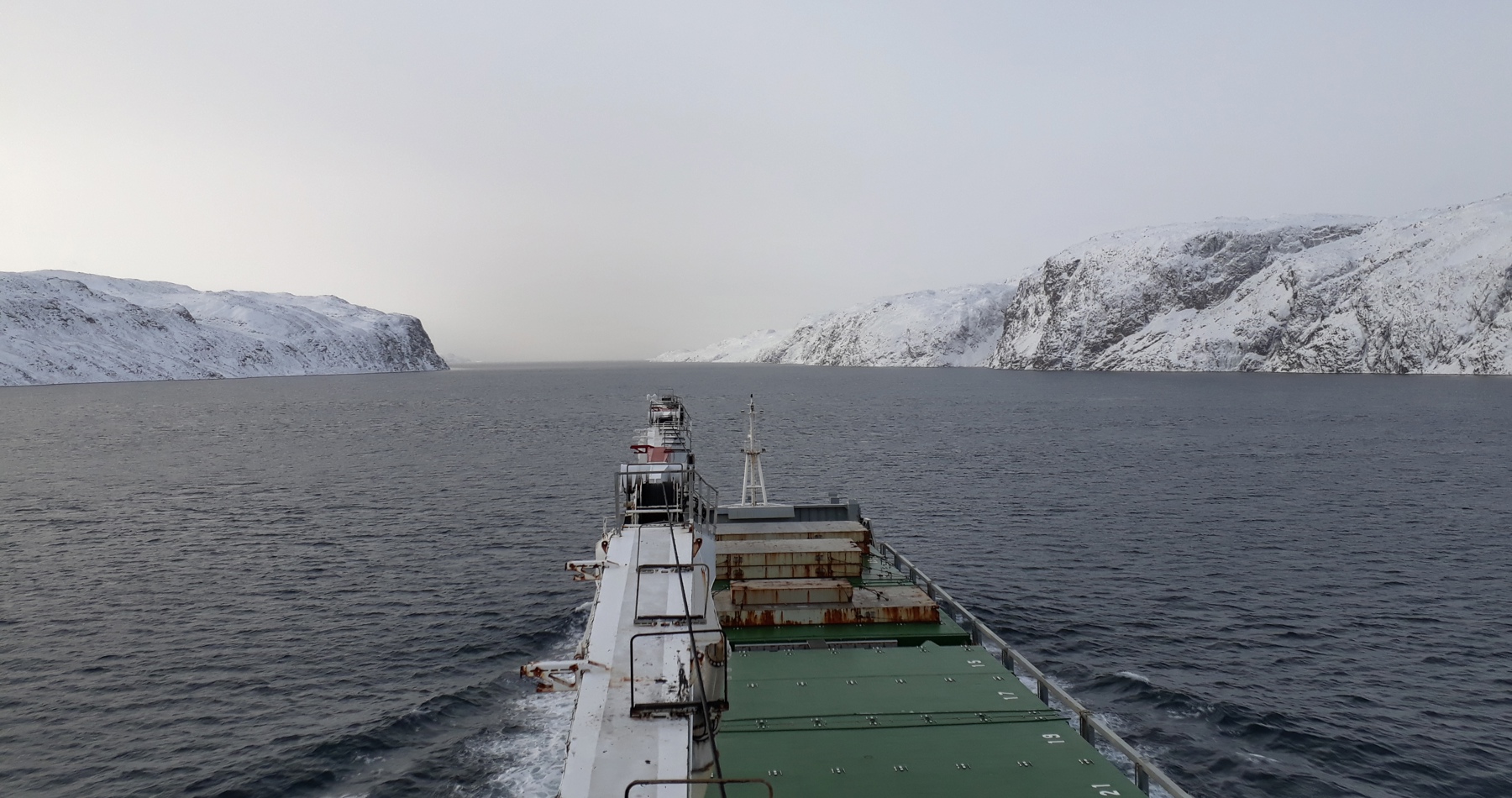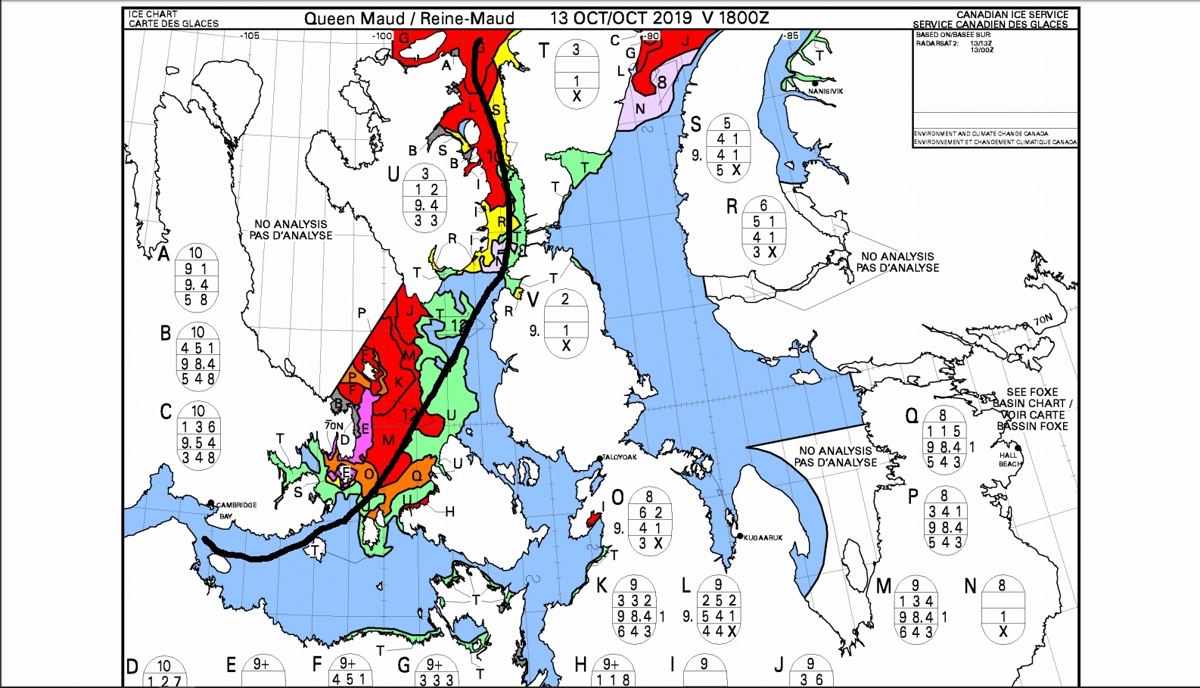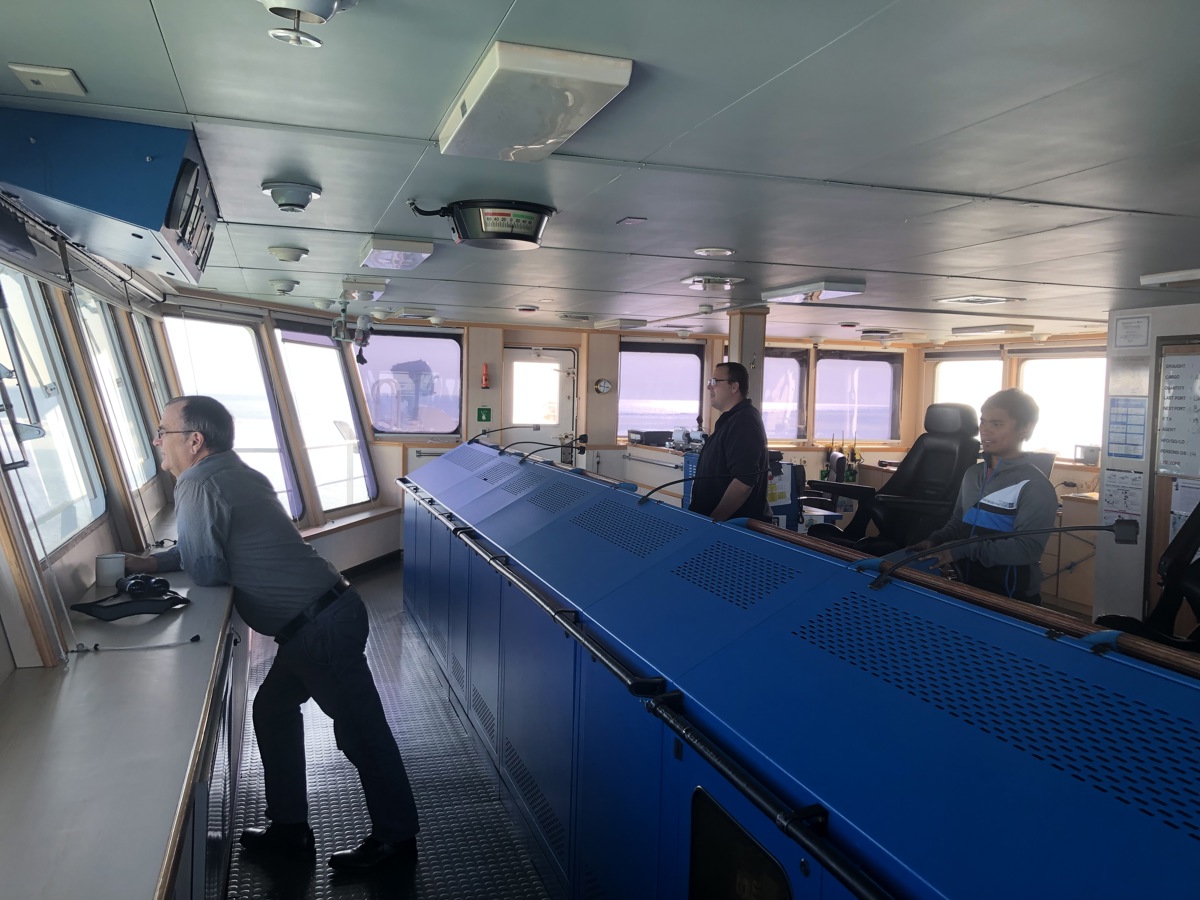
Safe and prosperous passages through thorough preparation
In conversation with
Frank van den Anker
Nautical superintendent
While the MV Amazoneborg is busy with the last transit of the season in the first week of October, Frank sits down: “Later on we will have another conference call with the ice navigator about the current ice situation in Canada. The Amazoneborg already sails in water where ice begins to form. It will really come down to one day. The icebreaker Terry Fox is nearby, and they can take a “short cut”. The NWP (Northwest Passage) will no longer be navigable in a week.“
How easy is it to make a trip in the polar region?
With this journey from the Amazoneborg, Wagenborg has made five journeys through the northern polar region this season: four times the Northwest Passage above Canada and the Northern Sea Route (NSR) above Russia. Both routes are considerably shorter compared to the traditional routes along the Panama Canal or the Suez Canal. But there are more challenges in terms of preparations instead. Frank: “Both the NWP and the NSR are in principle in free waters. They do, however, cross different EEZs (exclusive economic zone) and territorial waters of countries with different procedures and requirements. For example, in Russian territory you have to conclude a contract for ice breaker service. Actually we only hire them if the ice situation requires it. But we arrange more for our ships than what is required by law. For example, we hire external knowledge in Canadian waters through an ice pilot. These are often former captains of ice breakers who know the local waters like the back of their hand, and who themselves are supported with ice (breaker) information from their base. The Canadian authorities greatly appreciate that we strengthen our professional crew with extra local knowledge. Canada is concerned about the possibility of cruising freely through this region. We deal with it differently.“

"We arrange more for our ships than what is required by law."
When do you decide to make a trip through the polar region?
Of course there must first of all be an opportunity to conclude a trip that is suitable for this. “In practice, the chartering department comes to me after closing a journey that includes a passage through the Panama Canal or Suez Canal. Then we look together to see if the planning of the trip fits in the period in which the NWP or NSR are navigable. This is not so long. This year, for example, the NWP has been open for around 10 weeks; the NSR can be navigated a little longer. In addition, the NWP is more difficult to navigate than the NSR. There is shallow water, islets, narrow waterways, strong currents in some passages and it is closer to the coast. Hydrographic data from this sea route are available. Navigation facilities such as buoys and beacons are very limited. We have to make do with a mix of electronic and paper cards“, says Frank.
How is a ship selected for the voyage?
“When nominating a ship, the current ship position is leading. But a suitable crew is also crucial. For the NSR, for example, it is necessary for the crew to be or speak Russian. This is in connection with communication with the local shore parties and ice navigator. In addition, it is checked whether the crew have the required ice knowledge and training. In particular the captain and the officers must have demonstrable ice navigation to their name. For example, we have previously relieved the first officer on the Thamesborg for another officer who has followed additional training for sailing in polar regions. This is also a requirement from the IMO Polar Code.“

We hear a lot about Polar Code. What does this actually mean for your preparations?
For sailing in polar regions, IMO stipulates in the Polar Code that a ship must be equipped for this. You can prove this as a shipping company with a Polar Ship Certificate. In practice, this requires the necessary from both the technical service and the crew of the ship. Frank explains: “The ship must be adapted to extreme winter conditions. You can think of ice search lights, gyro-compass, safety equipment for the crew and facilities for satellite communication. You can imagine that regular communication equipment is not enough. These routes are in remote areas. They are not covered by the usual communication satellites and the shore radio stations are limited. These technical preparations do not only cost money; the time factor is also important. We need to find a suitable port where the work can - and may - be done and that fits in with the planning of the ship, in order to minimize deviation and delay. In addition, we bring safety kits on board: both personal safety kits with special food and clothing and group safety kits with tents and burners, among other things. With very cold temperatures and conditions, this should allow at least five days to survive in the event of an emergency.“

How many ships now have a Polar certificate?
“In 2018 MV Taagborg was the first vessel provided with a Polar certificate. We have since been busy rolling this out further across the entire fleet. For example, I wrote a Polar Operating Manual for Wagenborg Shipping for journeys in the polar region. We have had intensive consultations with both Bureau Veritas and Lloyd’s Register about the implementation of the Polar Code for our fleet. They have approved the mandatory risk analysis and manual for two types of Polar Code certificates, in line with our sailing areas. We show that we are at the forefront of the Polar Code. We expect that this time next year all ships will be provided with a polar certificate.”
"In 2018 MV Taagborg was the first vessel provided with a Polar certificate. We have since been busy rolling this out further across the entire fleet."
Ship has been nominated, crew has been scheduled, Polar certificate has been arranged: What next?
“Then the whole nautical aspect comes into play. Which route are we going to sail exactly? The NWP, for example, has various options. The route is completely dependent on the ice situation and the forecasts. First of all, I ensure that all necessary nautical charts and books are on board. Sometimes they are already there, the crew has already prepared this; otherwise I order them in consultation with the captain. This allows the captain to continue planning. The ice pilot is planned, communication lines are set out and the captain is informed about this. During this process I daily follow the developments of the ice situation and the accompanying forecasts closely. I mainly do this based on information from the Canadian Ice Service. Based on satellite images taken several times a week, photos of planes flying over the area and observations from local ships. Also during the trip itself I continue to do this through conference calls with the ice-navigator service. I do this together with supercargo Siep Willemsen.“
Does a journey above Russia require different preparations?
“Absolutely. Nautically, the NSR is less challenging,“ says Frank. “In comparison with the NWP, it is really an open sea where there is much more shipping activity. The complexity is more in the paperwork at the NSR. The Russian authorities require different permits and contracts. Piles of paper that are all only available in Russian. Well my Russian is not so good; that is why we have appointed a Russian person for the translation. Trust and the relationship is very important to us. Ultimately we sign three different documents for a passage: one with Atomflot for a Russian atomic ice breaker, which must have been ordered 10 days before possible use, one license to sail the planned route and a document in which we as a shipping company report to the ‘Boarder Guards’, a kind of border police. And all this must be arranged well in advance.“
The last polar journey of this year is almost over. On the way to 2020!
“True, the Amazoneborg completes the last NWP of the season within a few days. Then it’s over. Not just for us by the way; the NWP then simply starts to freeze up again and is no longer accessible for ships with our ice class. The winter is already beginning to stir considerably there. And how severe the winter will be determines the new season completely. The winter of 2018-2019, for example, has been fairly harsh, but the spring was very warm with warm winds, putting the season three weeks ahead of the “normal situation”. This has led to the current number of arctic trips this year. We will see what will do next year. In the meantime, together with the superintendents, I continue to get the ships certified Polar and I keep a close eye on developments in the region, for example during an Arctic seminar in Montreal,” concludes Frank.


